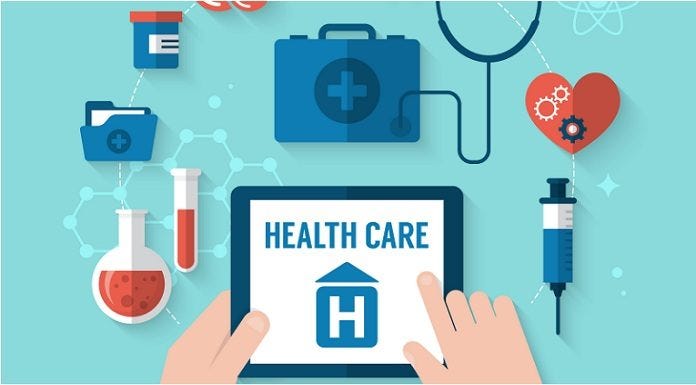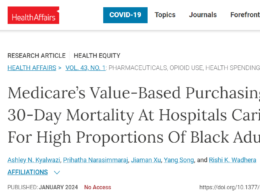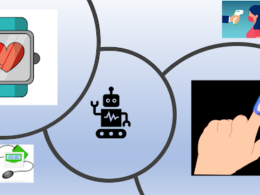Financial Times
Rifat Atun
November 29, 2016
This site version was edited by:
Joaquim Cardoso MSc.
health transformation — center of excellence
High Performance Health Care Delivery Unit (HPHC)
August 7, 2016
Transformative innovation in healthcare delivery is critical for sustainability of health systems worldwide.
They face a potentially crippling rise in health risks, chronic illness and disability, as well as higher citizens’ expectations of better healthcare and access to innovative medicines and medical devices.
With real growth in health expenditures far outstripping GDP growth and fiscal constraints, risks to sustainability are real.
The Organisation of Economic Cooperation and Development (OECD) estimates that medicines account for 20 per cent of total health expenditures.
Other studies suggest spending on medical devices to be about 5.9 per cent of total health expenditures in the US and 7.5 per cent in Europe.
But, in the OECD, almost three quarters of total health expenditures relate to healthcare delivery.
Herein lies the problem.
While scientific developments have spurred “delivery of innovations” for new medicines and medical devices, “innovation in delivery” has faltered.
Intensity of scientific discovery has far outstripped the pedestrian pace of innovation in healthcare delivery, where models hark back to the mid 20th century.
Writing in the Harvard Business Review in 2015, Nikhil Sahni and colleagues estimate that each year almost $1tn (35 per cent) of health expenditures in the US are “wasted” — one half because of “clinical waste”, which could be eliminated with more efficient and effective healthcare delivery.
OECD studies suggest variation in hospital costs for different interventions to vary by 5 to 48 per cent.
The World Health Organisation estimates globally potential efficiency savings of 20–40 per cent of total health expenditures in health systems.
… each year almost $1tn (35 per cent) of health expenditures in the US are “wasted” — one half because of “clinical waste”, which could be eliminated with more efficient and effective healthcare delivery.
Yet, opportunities abound for “transformative innovation” in healthcare delivery that combines novel use of technology, human resources, data analytics, payment systems and business models.
Yet, opportunities abound for “transformative innovation” in healthcare delivery that combines novel use of technology, human resources, data analytics, payment systems and business models.

One such comes from Wellframe®, in Boston, Massachusetts.
Wellframe® uses proprietary technology platform and data analytics to create digital personalised and interactive care pathways for patients with chronic illness and complex conditions to improve their care management.
The technology platform is used to deliver individualised prompts to patients to improve engagement and adherence to care.
Real time data captured along the care pathway and analytics enable sharing of critical information and trends with patients and care managers, for timely interventions to improve effectiveness and efficiency of healthcare delivery.
The company reports substantial improvements in patient engagement, effectiveness of care management, reduced care costs and improved care quality.

Aravind Eyecare System, established in 1976 in Madurai, India, has used “design principles” and “lean management” to produce one of the most efficient and effective eyecare systems in the world.
A charitable trust, Aravind has expanded as an integrated system that includes 11 eyecare hospitals, six comprehensive outpatient eyecare centres, eye banks, manufacturing of ophthalmic supplies, education, training and research.
Aravind uses proceeds from services it provides to private fee-paying patients to offer free cataract surgery to poor citizens in India.
In the fiscal year 2015–2016 Aravind provided 3.7m outpatient visits and performed more than 408,000 eye operations — of which 206,000 were full fee-paying, 116,000 subsidised and 86,000 free.
But where Aravind excels is in the efficient management of healthcare delivery, with effective use of human resources — especially surgeons — to achieve outstanding productivity (an Aravind surgeon performs on average 2,000 cataract surgeries a year, about five times that typically performed by a comparable surgeon elsewhere), low cost (about 20 times less than that for comparable surgery in the US) and low complication rates (reportedly one half that of UK levels).
Working with Integrated Health Solutions, Maastricht hospital in the Netherlands has applied design principles and lean management (incorporating process optimisation, critical pathways and better engagement of human resources) to innovate in healthcare delivery — achieving
- 20 per cent capacity increase,
- 30 per cent reduction in length-of-stay and 50 per cent fewer cancellations for cardiac surgery operations,
- 15 per cent improved productivity in catheter laboratory operations and higher patient satisfaction in its heart and vascular centre.
- Productivity improved by 36 per cent in orthopaedics outpatients and 20 per cent in dermatology. In just one-year efficiency savings were $2.5m.

An instructive case in transformative innovation is de la Ribera hospital in Alzira, Valencia — the first public private partnership in Spain, established in 1999.
At the heart of the “Alzira model”, is integrated healthcare delivery (a network of primary care, hospital and community services), which is publicly funded, but managed by a private company.
The company, Ribera Salud, which was awarded an “administrative concession” for 15 years, is responsible for “full management” of public healthcare services — promoting health and improving accessibility, quality and efficiency of healthcare provided — and is paid by the local authority a fixed sum per person covered.
Fully integrated electronic health records, digital patient care pathways and real time analytics enable efficient, co-ordinated and consistent healthcare delivery in the network, with benchmarking of performance.
Electronic administrative data provides the management necessary intelligence to optimise capacity in the network and manage costs.
Staff contracts include incentives for improved performance. Results published by Ribero Salud suggest substantial improvements in efficiency, quality and patient satisfaction, with lowering of costs, relative to other hospitals in Valencia.

Value-based healthcare, the Harvard professor Michael Porter argues, offers the chance to end the flawed practice of paying healthcare providers for inputs, and achieve value (better outcome for lower cost) for patients.
Indeed, value-based healthcare, when combined with bundled payments for cycles of care, new technology, data analytics and new business models, could drive large-scale transformative innovation in healthcare delivery.
For example, in 2009, Stockholm county in Sweden introduced bundled payment for total hip and knee replacements, with a complication warranty that made providers financially liable for complications related to the surgery.
The new payment model significantly reduced waiting times and improved patient satisfaction, with 26 per cent fall in complications and 20 per cent reduction in costs.
In 2013, the model was extended to spine surgery and then, in seven counties, to eight conditions, which account for €12–14bn of yearly health expenditures.
Transformative innovation is possible and needed to solve the sustainability crisis in health systems and benefit citizens — time for bold action is well overdue.
Rifat Atun is professor of global health systems at Harvard University and director of global health systems cluster at Harvard T.H. Chan School of Public Health
Originally published at https://www.ft.com on November 29, 2016.












